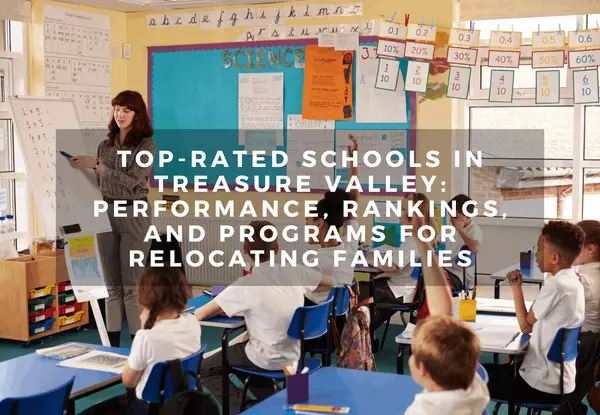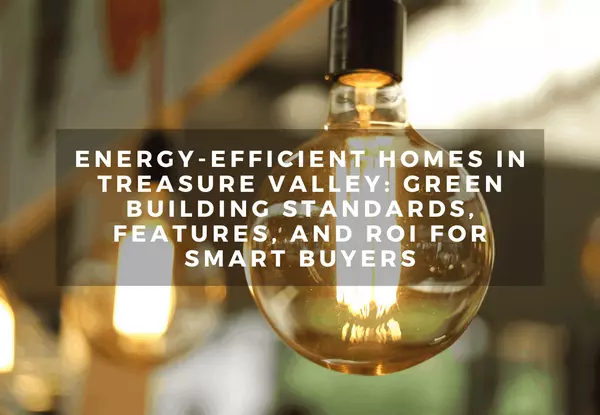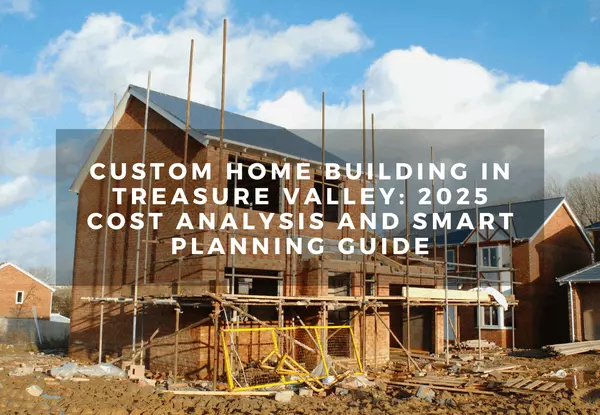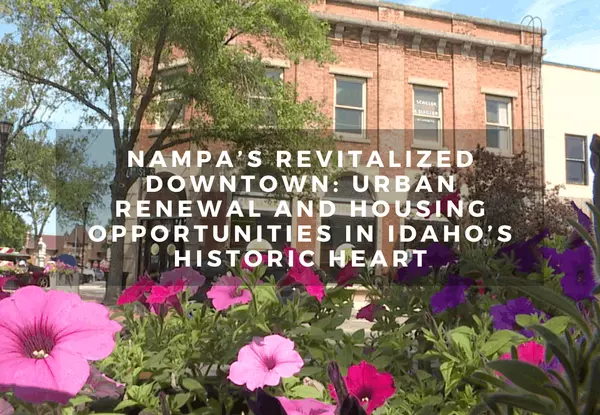Energy-Efficient Homes in Treasure Valley: Green Building Standards, Features, and ROI for Smart Buyers
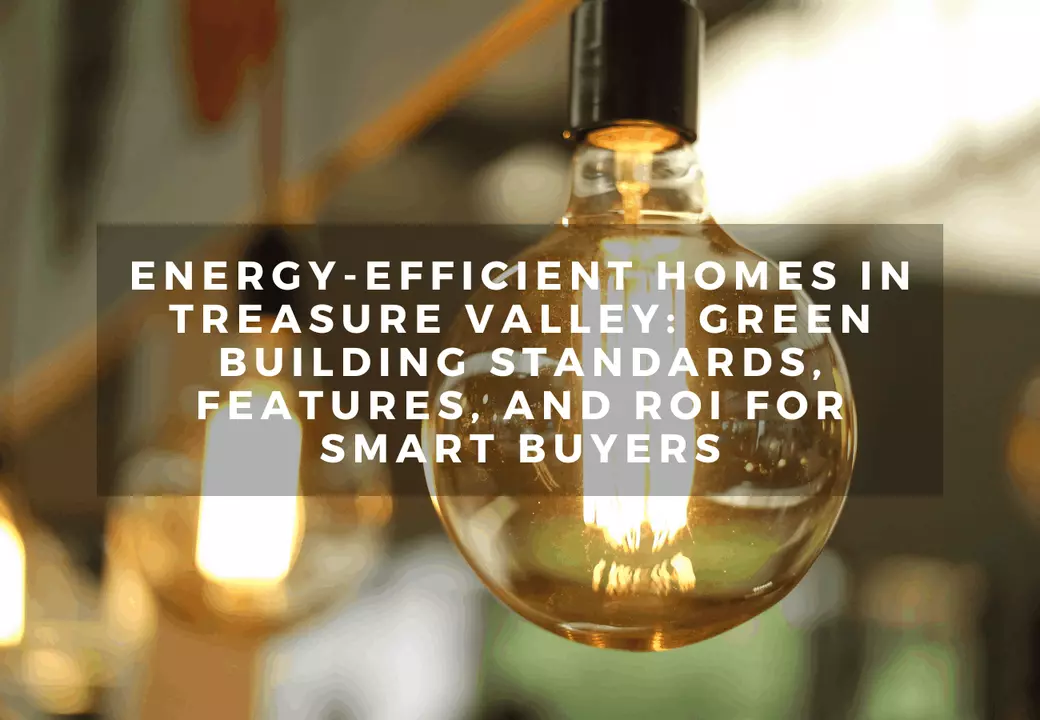
Why Energy Efficiency Is Reshaping Real Estate in Treasure Valley
As energy costs continue to climb and buyers become more conscious about sustainability, energy-efficient homes are gaining serious traction across the Treasure Valley. But going “green” isn’t just about helping the planet—it’s about long-term cost savings, smart investment, and often, higher resale value.
Whether you're looking to build a new home or upgrade your existing one, this guide breaks down what energy-efficient really means in 2025, the certifications that matter, and how those upgrades impact your wallet and your home’s value.
What Qualifies as an Energy-Efficient Home?
Energy-efficient homes are designed or upgraded to reduce energy consumption, lower utility bills, and improve indoor air quality and comfort. In the Treasure Valley, this often includes:
-
High-performance insulation and windows
-
Energy-efficient HVAC and water heating systems
-
LED lighting and smart home energy controls
-
Solar-ready or solar-equipped systems
-
Tight building envelopes and proper ventilation
But to take it a step further, many of these homes also qualify for certifications that validate their performance and provide long-term ROI.
Top Green Building Certifications in Idaho
HERS (Home Energy Rating System) Index
The HERS Index is one of the most common standards used in Idaho. It scores a home’s energy efficiency on a scale where 100 equals a standard new home, and lower scores mean better performance.
-
Score of 60–70 = 30–40% more efficient than a standard new home
-
Score of 50 or lower = Top-tier efficiency with major savings
-
Many builders in Meridian, Kuna, and Eagle now advertise HERS scores as a selling point
Why it matters: Lower HERS = lower monthly bills and better resale appeal to energy-conscious buyers.
ENERGY STAR® Certification
ENERGY STAR homes must meet strict energy efficiency guidelines set by the EPA. They typically include:
-
Advanced framing techniques
-
Efficient HVAC + ventilation systems
-
Performance testing and third-party verification
Builders like CBH Homes and Brighton Homes frequently include ENERGY STAR standards in their new construction packages across the Valley.
Benefit: ENERGY STAR homes can save 15–30% on heating and cooling costs annually.
LEED Certification (Less Common in Residential)
While more common in commercial buildings, LEED-certified homes do exist in the Treasure Valley. These are typically custom builds or higher-end homes focused on sustainability and environmental design.
LEED homes consider:
-
Energy usage
-
Water efficiency
-
Indoor environmental quality
-
Sustainable materials and landscaping
ROI Impact: LEED homes command a premium price and offer the highest level of environmental certification.
Energy-Saving Features That Matter in the Treasure Valley
HVAC and Insulation
In Idaho’s four-season climate, heating and cooling costs make up the bulk of a home’s energy use. Look for homes with:
-
96%+ efficient gas furnaces
-
Heat pumps or dual-fuel systems for year-round efficiency
-
Spray foam or blown-in insulation
-
Conditioned crawl spaces to eliminate energy loss
Windows and Doors
Double- or triple-pane low-E windows are standard in most new construction now. Older homes often benefit from window replacements that can cut energy loss by 20–30%.
Pro Tip: Look for ENERGY STAR window labels specific to the Northern Climate Zone.
Smart Home Tech
Homes with smart thermostats, lighting, and appliance controls can reduce energy usage and boost comfort—especially if you're frequently away from home or managing a rental property remotely.
Popular upgrades:
-
Nest or Ecobee thermostats
-
Motion-sensor LED lighting
-
Whole-home energy monitors (Sense or Emporia)
Solar Integration
Solar is growing in popularity across the Treasure Valley, especially in rural areas and luxury homes with south-facing roofs. Idaho Power offers net metering, and several incentives are still in play for 2025.
Financing options include:
-
Solar leases
-
Home equity loans
-
Energy-efficient mortgages (EEMs)
While solar won’t make sense for every buyer, it can reduce or eliminate utility bills and offer long-term ROI—especially if you plan to stay in the home 5+ years.
ROI and Resale Value of Energy-Efficient Homes
Lower Operating Costs
Buyers are paying attention to monthly affordability, not just purchase price. A $3,000 annual utility savings is the same as cutting $250/month from a mortgage payment—and buyers notice.
Higher Appraisal and Resale Value
Appraisers are increasingly using energy-efficiency features to justify higher values, especially when:
-
Certifications are documented
-
Utility savings are proven
-
Comparable sales support the premium
According to recent national data:
-
ENERGY STAR homes can sell for 3–8% more than similar non-certified homes
-
High-efficiency homes spend less time on market
In Boise, Meridian, and Eagle, we've seen well-documented energy-efficient homes stand out in listing appointments and open houses—especially when paired with solar, smart tech, and modern design.
Tax Credits and Incentives in 2025
While programs vary, federal tax credits for energy-efficient improvements continue in 2025. These may include:
-
30% tax credit for solar (up to a cap)
-
Credits for heat pump systems, insulation, energy-efficient doors/windows
-
Local utility rebates through Idaho Power or Intermountain Gas
Work with your CPA or tax advisor to make sure you capture all available savings when buying or upgrading.
New Construction vs. Retrofitting an Existing Home
New Builds
Most new construction homes in the Treasure Valley (especially from reputable builders) already include:
-
Efficient HVAC
-
Tight construction
-
ENERGY STAR appliances
-
HERS ratings
Builders like Brighton, Berkeley, and Alturas Homes are known for incorporating energy-smart features into their design standards, especially in master-planned communities like Paramount (Meridian) or Hope Springs (Star).
Existing Homes
Older homes in Boise’s North End, downtown Nampa, or east Caldwell may need upgrades—but that’s where you can often add value.
Top retrofit projects for ROI:
-
Attic insulation
-
Window replacements
-
Furnace upgrades
-
Smart thermostats
-
Tankless water heaters
We help clients evaluate the energy profile of each home and prioritize where upgrades make the most impact.
Buyer and Seller Tips: How to Navigate Energy-Efficient Real Estate
For Buyers
-
Ask for the HERS score on any new construction home
-
Request utility bills to compare energy costs (especially on resale homes)
-
Look for ENERGY STAR labels on appliances, windows, and HVAC
-
Factor energy savings into your monthly budget—not just list price
For Sellers
-
Highlight energy-efficient features in your listing description
-
Include documentation of certifications, improvements, and recent energy bills
-
Stage smart home tech to showcase value
-
Offer buyers a home warranty that includes HVAC and appliances
Final Thoughts
Energy-efficient homes aren’t just a trend—they’re becoming the new standard. Buyers want lower bills, better comfort, and homes that are built to last. Whether you're buying, building, or selling, energy-smart features add real value when done right.
If you're not sure what to look for or how to calculate long-term ROI, I’d be happy to walk through the numbers with you and help you find a home that’s efficient, comfortable, and financially smart.
Looking for an energy-efficient home in the Treasure Valley?
📲 Call or text Curtis Chism at (208) 510-0427
📧 Email: info@chismteam.com
📥 Ready to relocate remotely? Download our Boise Relocation Guide
Categories
Recent Posts
